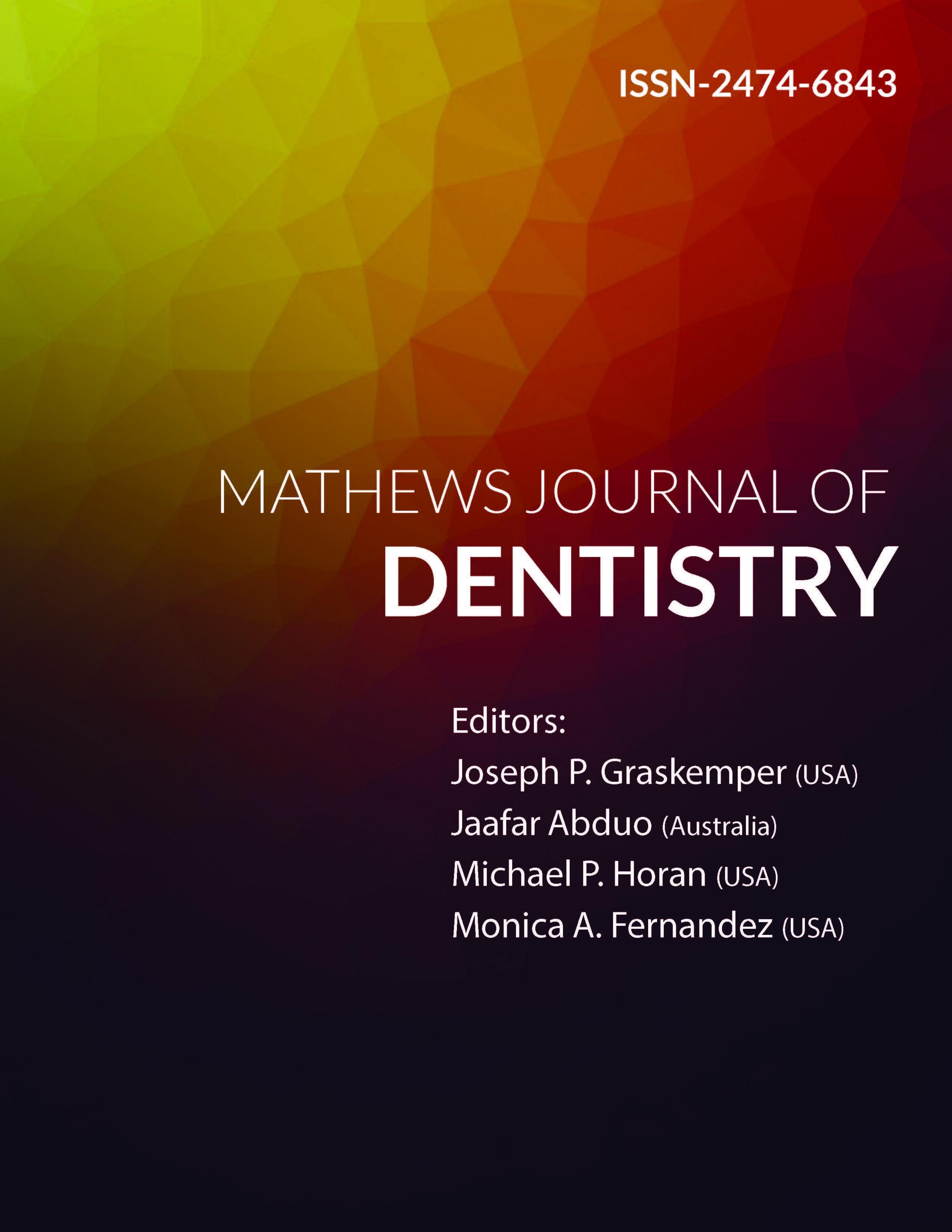
Information Links
Previous Issues Volume 3, Issue 1 - 2018
Periodontal Disease Indices in Pre-treatment Patients with the Most Frequent Types of Cancer
Nikolaos Andreas Chrysanthakopoulos*
Dental Surgeon (DDSc), Resident in Maxillofacial and Oral Surgery, 401 General Military Hospital of Athens, Athens, Greece.
Corresponding Author: Nikolaos Andreas Chrysanthakopoulos, 1Dental Surgeon (DDSc), Resident in Maxillofacial and Oral Surgery, 401 General Military Hospital of Athens, Athens, Greece, Tel: +30-2610-225288; E-Mail: [email protected]
Received Date: 05 Oct 2018
Accepted Date: 11 Oct 2018
Published Date: 12 Oct 2018
Copyright © 2018 Chrysanthakopoulos NA
Citation: Chrysanthakopoulos NA. (2018). Periodontal Disease Indices in Pre-treatment Patients with the Most Frequent Types of Cancer. Mathews J Dentistry. 3(1): 021.
ABSTRACT
Aim : The purpose of the present retrospective study was to investigate the incidence of the most frequent types of cancer in patients referred to a private dental practice for periodontal treatment and to assess possible correlations between those and periodontal disease severity in the population sample examined.
Material and Methods: Data were collected from the health questionnaires and the dental and medical records of 550 individuals. Stepwise multiple linear regression analysis was carried out to assess correlations between the most frequent types of cancer as independent variables and periodontal indices: the number of remaining teeth, the relative frequency of periodontal pockets (PPD) of = 5.0 and clinical attachment loss (CAL) of = 6.0mm, as the dependent ones.
Results : The relative frequencies of remaining teeth were 20.5 and 21.1 for individuals who suffered from gastric and colorectal cancer, whereas the relative frequencies of PPD = 5.0 mm were 5.6 mm and 5.8 mm for lung and gastric cancer patients, respectively. It was also found that the relative frequencies of CAL = 6.00 mm were 6.6 mm and 6.0 mm for individuals who suffered from gastric and colorectal cancer, respectively. The number of remaining teeth was negatively and significantly correlated with the presence of lung (p=0.000) and gastric cancer (p=0.031), PPD was significantly correlated with the presence of the same cancer types, (p=0.007) and (p=0.007) respectively, and colorectal cancer (p=0.044), whereas CAL was significantly correlated with the same cancer types (p=0.003) and (p=0.015), respectively, and with the presence of colorectal cancer (p=0.036). After adjustment for age, gender and smoking, the mentioned correlations remained.
Conclusion : Significant correlations between lung, gastric and colorectal cancer and periodontal disease severity were found after using of the number of remaining teeth, PPD and CAL as clinical indices for periodontal disease severity.
KEYWORDS
Cancer; Health; Questionnaire; Periodontitis; Indices